You down a quick breakfast before rushing off to work. You race from task to task, dash from meeting to meeting. And then you hurry home to fix dinner.
In the real world, we move quickly all too often, and yet we tend to avoid quick movements when we train.
Slow, controlled pushups, squats, and downward dogs are certainly good for you: They build strength, burn fat, and help protect against injury. They also help you develop good form. But they won’t fully prepare you for the blazing pace of life outside the gym, particularly if your life includes any high-velocity activities — like sports.
“If you plan on moving fast, you’d better practice and train moving fast,” says Andrea Hudy, MS, CSCS, USAW, assistant athletic director for sports performance at the University of Kansas.
In gym-speak, that means training for power. “Power is force times velocity,” she explains. “Being strong means you can exert force. But being powerful means you can exert it fast — and slow down fast as well.” Strength is a barbell squat; power is a vertical leap.
It’s also a topspin forehand, an uphill sprint, a long drive down the fairway — athletic performance in general. Says Hudy: “I don’t know of too many sports where the coach says, ‘Go slowly.’”
Off the playing field, power is equally important: One 2012 study linked loss of power to functional limitations in older adults.
In an earlier study, researchers found that, without proper training, power declines at a rate of 30 percent per decade — that’s three times the rate at which you lose slow-and-controlled strength.
The good news? Power training — which includes jumps, throws, and variations on the Olympic lifts (the snatch and the clean and jerk) — is fast-paced and fun. And often it’s a welcome relief from the isolation-based squeeze-and-hold moves in a typical gym workout.
When you train for power, you perform the concentric (lifting) phase of each rep as explosively as possible, using virtually all the muscles in your body.
The Explosive Power Workout
Before you can safely focus on developing power, you need to establish a basic fitness foundation — and the strength, balance, and coordination that comes along with it. “Speed comes last,” says Andrea Hudy, who designed this workout. If you’re new to exercise, stick with two or three sets of each power move at the start of your strength workout. Once you have workout experience and are comfortable with gym standbys like deadlifts, squats, and overhead presses, you can perform up to five sets of each move — or put them all together for a fast-paced, sweat-inducing, power-based workout.
Directions
- After a warm-up, do five sets of each of the following exercises in order, resting 30 to 60 seconds between sets.
- Plant your feet (or, in the case of the pushups, plant your toes and hands) firmly beneath you.
- Brace your core (as if you were about to get punched in the stomach) before beginning each movement.
- Perform the concentric (lifting) portion of each rep as quickly and explosively as possible.
- Catch or lower the ball or weight smoothly after each move.
- Aim for five reps per set, but stop sooner if your form starts to break down. Each rep should be an all-out effort with good form.
1. Vertical Jump
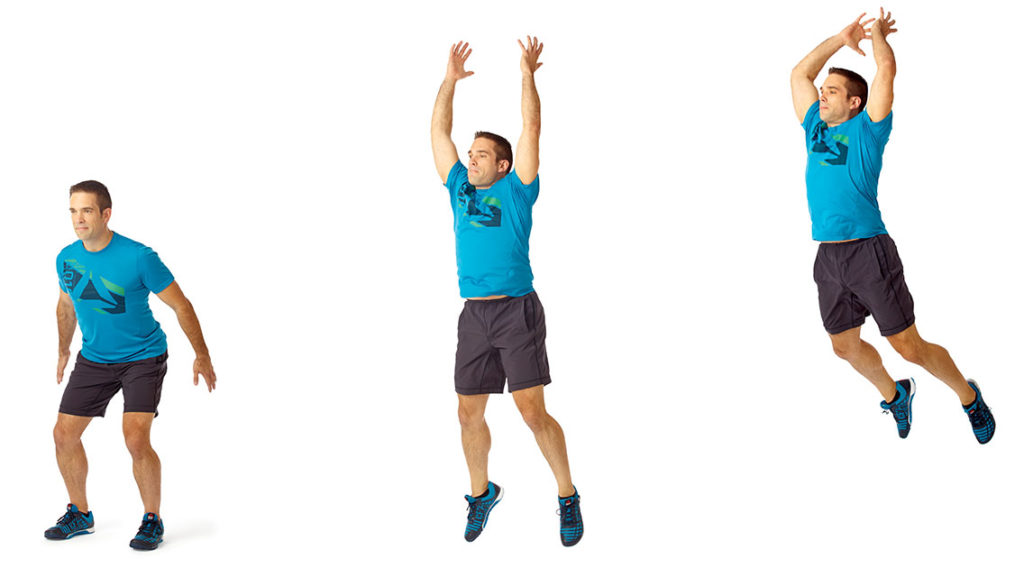
- Stand with your feet parallel and shoulder-width apart.
- Keeping your lower back in its natural arch, bend slightly at the hips and knees, descending into a partial squat.
- Swing your arms down and back.
- Quickly reverse the direction of your arms, swinging them forward and up.
- As your arms rise, jump straight up into the air as high as you can, reaching your arms upward as if trying to touch a basketball hoop.
- Land softly, letting your toes touch the ground first, followed by the balls of your feet and then your heels. Allow your arms to swing backward to prepare for the next jump.
- Repeat four more times for one set.
Variations:
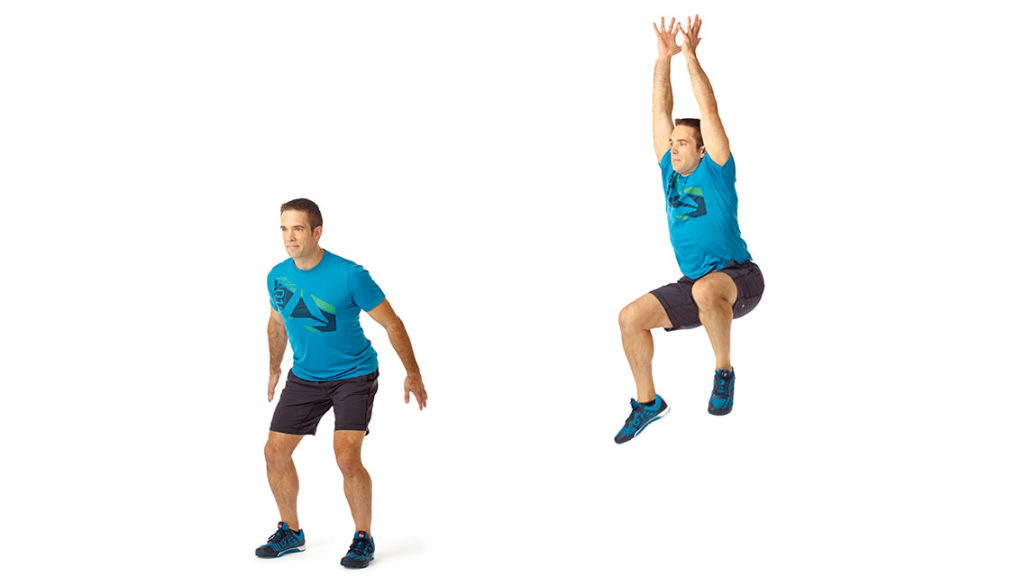
To make this movement more challenging, draw your knees quickly to your chest at the top of the movement, or perform quarter, half, three-quarter, or full rotations, alternating left and right.
2. Overhead Med-Ball Throw
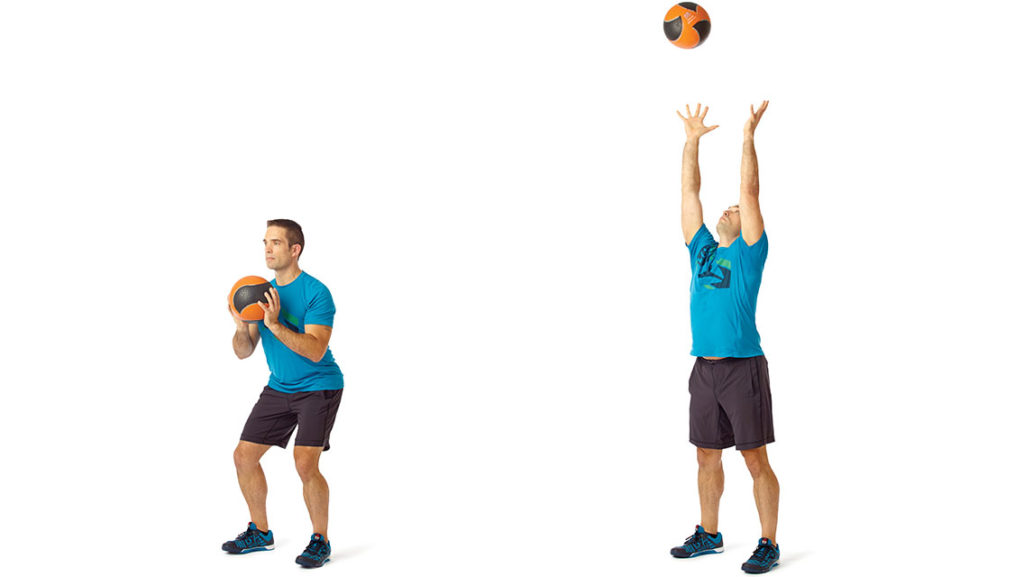
- In a room with a high ceiling (or outdoors), stand with your feet shoulder-width apart and hold a medicine ball at shoulder height. (Choose a ball weighing 6 to 10 pounds, according to your strength and experience level.)
- Keeping your lower back in its natural arch, bend slightly at the hips and knees and descend into a partial squat.
- Quickly reverse the movement, fully extending your hips and throwing the ball overhead. Squeeze your glutes and use the power of your hips and legs, rather than your arms, to launch the ball as high as possible. Keep your gaze up, but be careful not to crane your neck to watch the ball.
- Catch the ball softly, bending your elbows and knees as it lands in your hands.
- Repeat four more times for one set.
Variation:
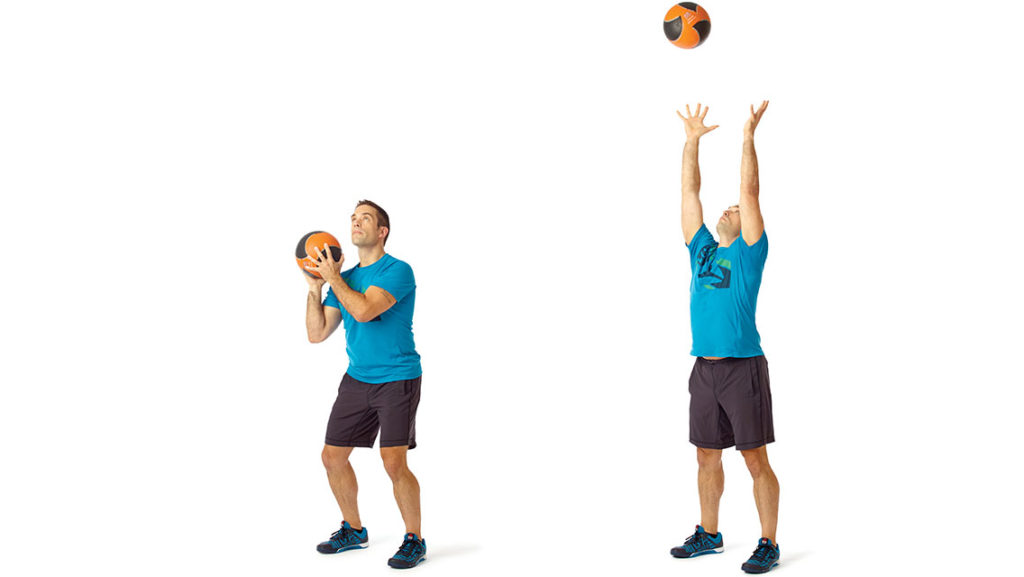
- Start with the ball shifted slightly toward your right shoulder (as if you were preparing to shot-put it)
- Then throw and catch the ball.
- Alternate sides to complete three reps per side.
3. Jumping Pull-Up

- Stand beneath a pull-up bar so you can grasp the bar with a double-overhand grip, elbows slightly bent. If the bar is out of reach with your feet on the floor, position a bench, large box, or other sturdy platform beneath it to give you a boost.
- Keeping your lower back in its natural arch, bend your knees slightly.
- Jump upward, fully extending your hips, knees, and ankles. Use the power of your hips and legs to help pull yourself up until your chin reaches bar height.
- Lower yourself with control, and land softly on your feet.
- Repeat four more times for one set.
Variations:
- Use an underhand (chin-up) or parallel grip, or perform the exercise using gymnastics rings.
- Advanced exercisers can pause at the top or release the bar for a split second at the top of the move.
4. Hands-Elevated Explosive Pushup
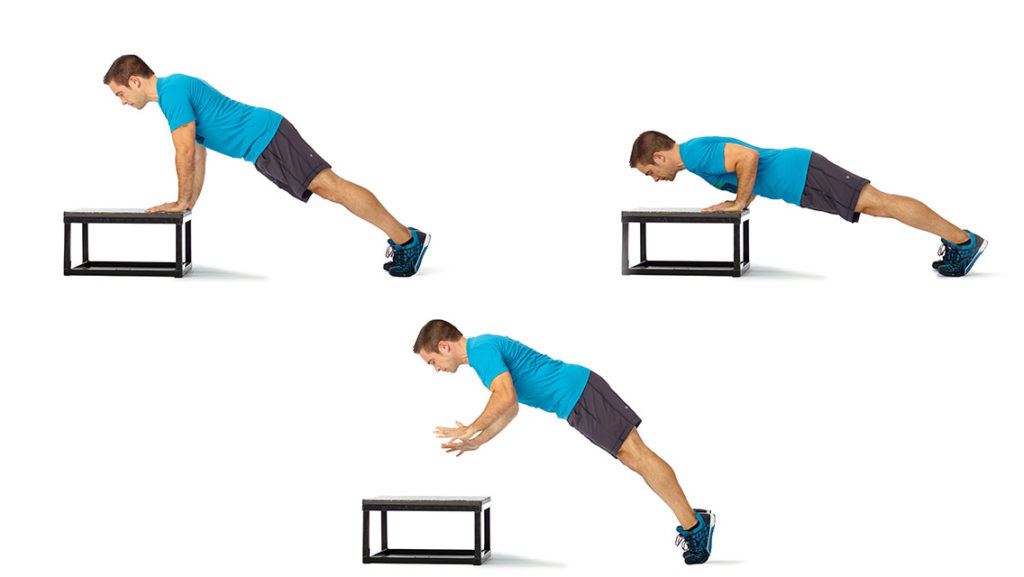
- Stand facing a wide box, bench, or other sturdy platform.
- Place your hands on the elevated surface and assume the top of a pushup position with shoulders away from your ears and glutes and abs engaged.
- Keeping your body straight and your head and neck neutral, bend your elbows and lower your body. Keep your elbows tucked close to your sides as you descend, and squeeze your shoulder blades together at the bottom of the movement.
- Quickly push yourself back up to the starting position as explosively as you can. If possible, lift your hands off the platform for a split second, then catch yourself softly.
- Repeat four more times for one set.
Variations:

To make the movement easier, use a higher platform. To make it harder, place your hands on a lower box or on the floor in a standard pushup position. Once you’ve mastered lifting your hands slightly, experiment with clapping between repetitions.
Bonus Exercises
Perform these exercises on their own, or as part of the Explosive Power Workout in a circuit. Each movement works the entire body and helps build explosive power and strength. Remember to warm up first and focus on proper form throughout. Start with two to three sets, working up to five sets of each exercise.
Rope Power Slam
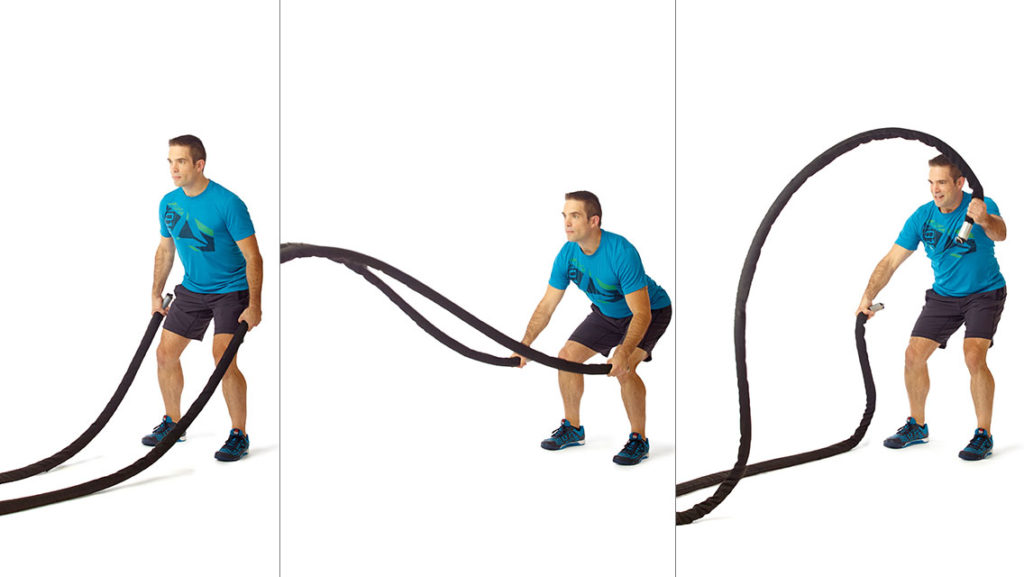
- Stand with your feet slightly wider than shoulder-width apart, facing the ends of a pair of fully extended battling ropes.
- Grip the ends of the ropes with your palms facing each another.
- Keeping your torso upright and your lower back in its natural arch, bend your knees into a partial squat.
- Quickly reverse the movement, extending your ankles, knees, and hips fully, while simultaneously raising the rope-ends overhead as far as you can.
- As explosively as possible, whip the rope-ends downward, slamming the ropes into the floor as hard as you can.
- Repeat for a total of five repetitions.
Variations: Alternate hands as you slam the ropes up and down, whip the ropes from side to side, or trace different patterns with the ropes — inward or outward circles, or a sideways figure-eights.
Med-Ball Slam

- Stand with your feet about shoulder-width apart, holding a six to 10-pound ball both hands at shoulder height, with hands on either side of the ball.
- Keeping your torso upright and your lower back in its natural arch, bend your knees into a partial squat.
- Lift the ball overhead as far as possible while simultaneously extending your ankles, knees, and hips fully.
- As explosively as possible, throw the ball into the floor about a foot in front of you as hard as you can. Imagine you are trying to make a hole in the floor.
- Catch the ball as it bounces back up in front of you.
- Repeat for a total of five repetitions.
Variations: As you lift the ball overhead, rotate your body slightly to one side and slam the ball to the floor a few inches to the outside of your right foot, catch it, then slam it to the outside of your left foot, alternating sides on each rep.
Watch all the moves at “Explosive Power Workout (Video)“.
This article has been updated. It was originally published online on October 20, 2014.
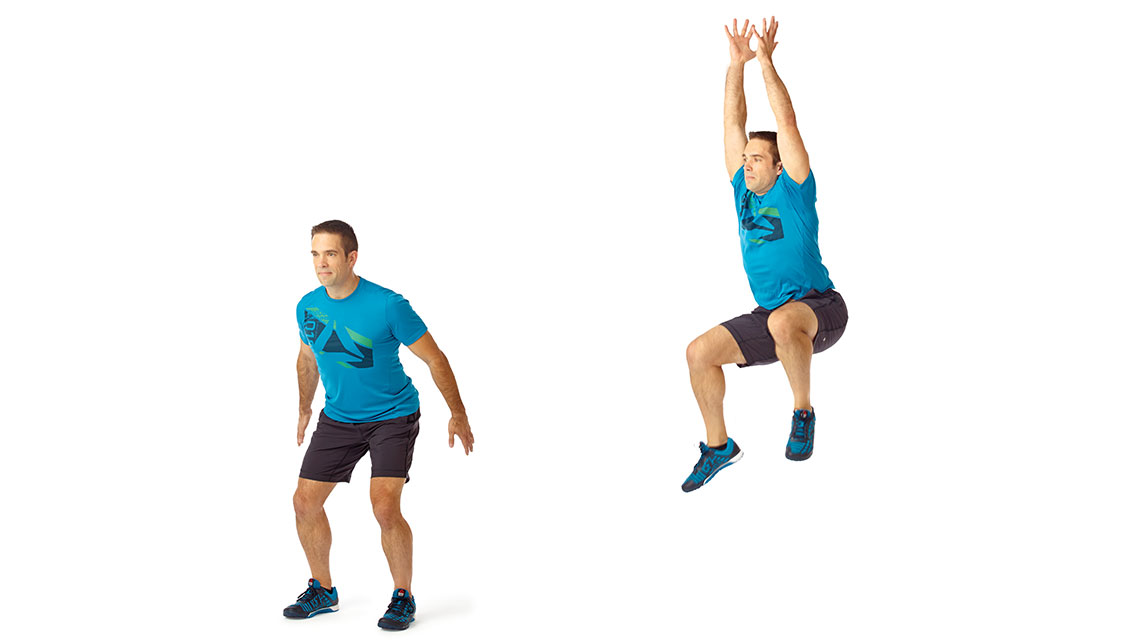
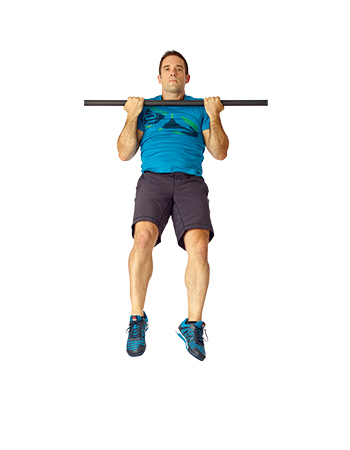



This Post Has One Comment
Solid work-out! Adding these movements to any routine will mix things up nicely!
Time to get after it!
~B3